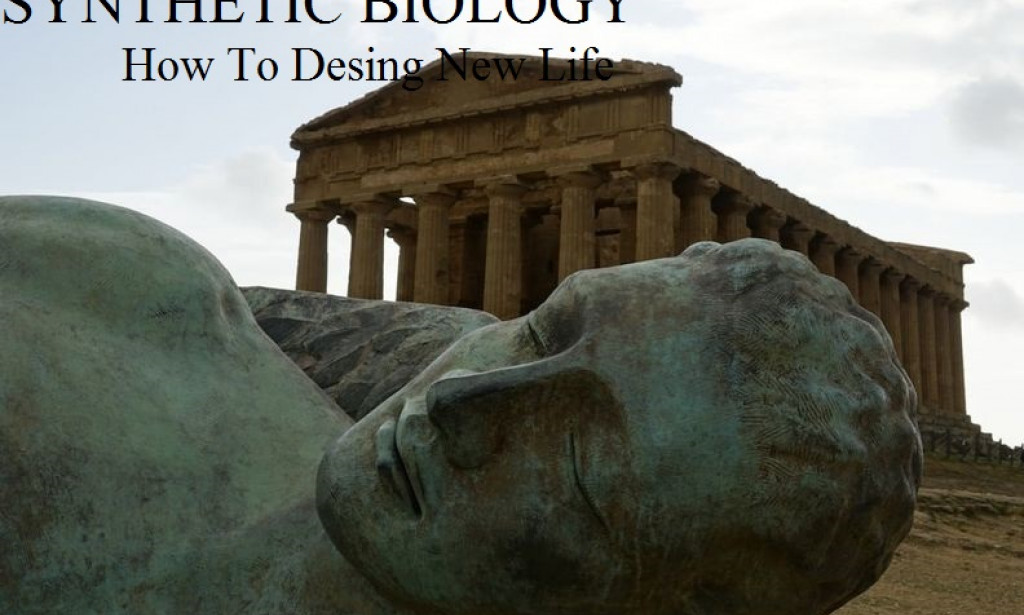Introduction
Prominent among emerging technologies is “synthetic biology,” which aims to apply standardized engineering techniques to biology and thereby create organisms or biological systems with novel or specialized functions to address countless needs. Besides, synthetic biology is a new research field within which scientists and engineers seek to modify existing organisms by designing and synthesising artificial genes or proteins, metabolic or developmental pathways and complete biological systems in order to understand the basic molecular mechanisms of biological organisms and to perform new and useful functions. This research sector is heterogeneous and results from the convergence of different technological and scientific tools (from information technology to chemistry, engineering, biology, mathematics and computer modelling). For instance, some author classified the scope of synthetic biology at three levels. First, new types of regulatory network are constructed using natural biological motifs or modules with known functions. The second is to synthesize genomic DNA and reconstruct the living body using de novo synthesis method. The third is the creation of a completely new biological system and even artificial life after the first two fields have been well developed.
However, the idea of managing or manipulating biology to identify or develop specific characteristics is not new. Scientists have used DNA to create genetically engineered cells and organisms for many years; the entire biotechnology industry has grown around our expanding abilities in this area. By contrast, Synthetic genomics combines methods for the chemical synthesis of DNA with computational techniques to design it. These methods allow scientists to construct genetic material that would be impossible or impractical to produce using more conventional biotechnological approaches. Among the most powerful of those tools is the capacity to synthesize DNA molecules of any desired sequence and to put these sequences to use in microorganisms. This offers the exciting prospect of assembling the best “parts” from the vast diversity of life to create organisms with new capabilities for many different purposes. Similarly, the idea of assembling living organisms wholesale from nonliving parts has intrigued human imagination for centuries with no success outside of fiction. For some, that possibility came one step closer last May with the announcement that scientists at the J. Craig Venter Institute had created the world’s first self-replicating synthetic (human-made from chemical parts) genome in a bacterial cell of a different species. Such revolutionary advances have the potential to bring significant benefits to individuals and society. At the same time, the power of these technologies raises questions about the risks from their intentional or accidental misuse for harm. Synthetic genomics thus is a quintessential “dual-use” technology—a technology with broad and varied beneficial applications, but one that could also be turned to nefarious, destructive use. Such technologies have been around ever since the first humans picked up rocks or sharpened sticks. But biology brings some unique dimensions: given the self-propagating nature of biological organisms and the relative accessibility of powerful biotechnologies, the means to produce a “worst case” are more readily attainable than for many other technologies. This paper will provide an overview of scope, application and implication of synthetic biology.
Synthetic biology is a new research field that results from the convergence of different technological and scientific disciplines and allows a better understanding of biological systems, their complexity and emergent properties that derive from the interaction of complex pathways and also thereby create organisms or biological systems with novel or specialized functions to address countless needs. Synthetic biology offers opportunities to apply biological and engineering principles to benefit humankind in unprecedented ways. Clean energy sources, targeted medicines and more efficient vaccine production, new chemicals, environmental cleansers, and hardy crops are some of the potential applications of this burgeoning field of science. The various synthetic biology alternatives to current bio-fuel production methods include producing cellulosic ethanol (derived from cell walls rather than corn) and manufacturing other bioalcohols with synthetically manipulated biomass. Besides, one well-known example of synthetic biology in medicine is the re-engineering of a microorganism to make the anti-malarial drug artemisinin more cheaply and efficiently. While most of the fruits of synthetic biology remain in early stages of development, some applications are expected to come to market within a few years.
This technology is in its nascent state and there are a number of concerns surrounding its potential applications and the nature of research being performed gave rise to concerns issues relating to ethics, security and safety. The debate surrounding syntheticbiology has raised several issues, such as bioethics, bio-security, bio-safety, involvement of stakeholders and intellectual property rights which has launched more than 10 years ofheated discussion within the scientific community. Concerning to ethical issues, the creation of artificial organisms that are not found in nature leads to ethical questions about the role and responsibility of human beings in creating novel life forms. From a deontological perspective, these arguments are a continuation of longstanding debates, such as "Whether people should play God?", If people have the right to intervene with the characteristics of future humans. Biosafety issues surrounding synthetic biology includes: unmanaged release of synthesized organism could, in theory, lead to undesired cross-breeding with other organisms, uncontrolled proliferation, crowding out of existing species, and threats to biodiversity or sturdier pests—animal or plant—that may be difficult to control, and increased pesticide resistance and growth of invasive species. Bio-security issues mainly include misuse through loss, theft, diversion or intentional release of pathogens, toxins and other biological materials. For example, some worry that terrorist attacks and biological warfare with synthetic biological products will become much easier, especially considering that techniques to produce deadly pathogens are relatively very easy to obtain. As the results, some authors recommended the methods include the engineering of so-called “terminator” genes or “suicide” switches that can be inserted into organisms, precluding them from reproducing or surviving outside of a laboratory or other controlled setting in the absence of unique chemical conditions. Some are clearly sufficient to neutralize the risk of release, and others require further study as synthetic biology progresses.


You must be logged in to post a comment.